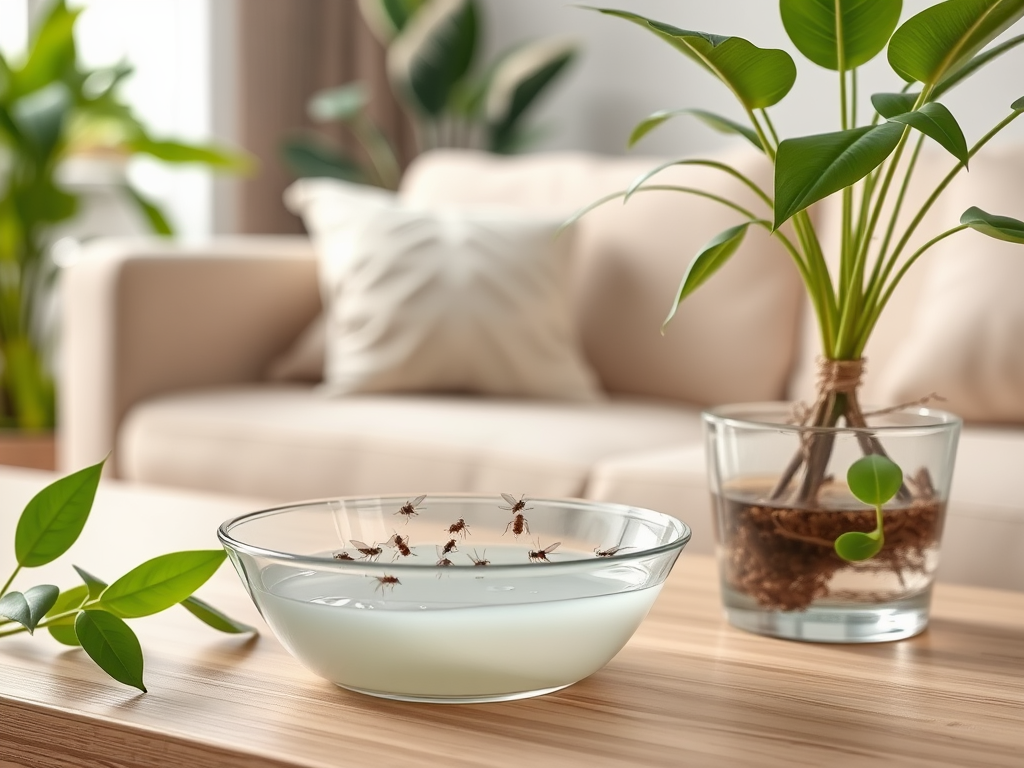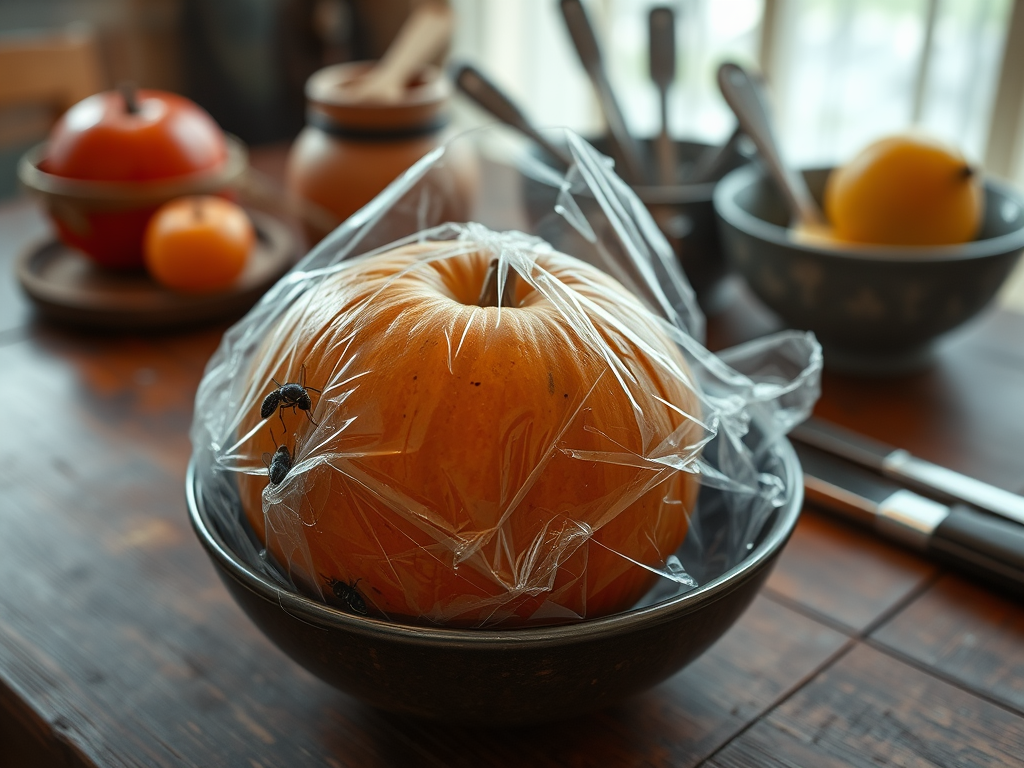Gnats are more than just a fleeting annoyance; they represent a significant challenge for homeowners who prioritize both comfort and eco-friendliness in their living spaces. As the warmer months approach, these tiny pests multiply, invading kitchens and gardens. However, instead of reaching for chemical-laden solutions that can harm your environment, consider utilizing natural traps that effectively capture these nuisances while maintaining a safe home. These eco-friendly traps not only serve their purpose well but also align with sustainable practices that are increasingly vital in today’s world. In this article, we delve into various natural gnat traps, discuss their benefits, and outline effective strategies to both trap and prevent these little invaders.
The significance of understanding what attracts gnats cannot be overstated. They thrive in damp conditions and are particularly drawn to overripe fruits and certain houseplants. By recognizing these preferences and behaviors, homeowners can better equip themselves to tackle infestations effectively. Moreover, employing natural traps provides a dual benefit: effectively managing pest populations while promoting environmentally responsible practices within your household. The journey to a gnat-free home begins by exploring the different types of traps available and how to set them up successfully.
Understanding Gnats: A Brief Overview

Gnats belong to a family of small flies classified as dipterans, and they can be particularly persistent during certain times of the year. Typically, you will find them buzzing around your kitchen or near indoor plants, making them a common household pest. The first step in addressing a gnat problem is understanding their lifecycle, which includes an egg, larval, and adult stage. Adult gnats live for about a week to ten days, during which they can lay hundreds of eggs—leading to a rapid increase in infestation if not managed promptly.
These tiny insects can be categorized into different types, including fruit flies and fungus gnats, each with its unique attraction and lifecycle. Fruit flies are often found around ripe or fermenting fruit, while fungus gnats usually thrive in the moist soil of houseplants. By being informed about these distinctions, you can choose the most effective natural trap for your specific gnat type.
The Benefits of Eco-Friendly Gnat Traps

Opting for eco-friendly traps goes beyond mere pest control; it’s about embracing choices that are safe for your family and the planet. Here are some essential benefits of choosing natural gnat traps:
- Safety: Non-toxic options ensure the safety of children and pets as they roam the home.
- Effectiveness: Many natural traps have proven methods that significantly reduce gnat populations without harmful side effects.
- Affordability: These traps can be made using common household items, saving you money in the long run.
- Sustainability: By minimizing the use of harsh chemicals, you contribute to a cleaner environment.
This multifaceted approach not only helps in pest management but also fosters a commitment to eco-conscious living.
Types of Natural Gnat Traps
When it comes to natural gnat traps, several effective and innovative methods can be employed, each with unique advantages. Below are some popular options:
| Trap Type | Bait Used | Setup Complexity |
|---|---|---|
| Vinegar Trap | Apple cider vinegar | Easy |
| Soap and Water Trap | Dish soap and water | Very Easy |
| Fruit Trap | Overripe fruit | Moderate |
| Alcohol Trap | Rubbing alcohol | Easy |
Vinegar Traps
The vinegar trap is one of the simplest yet most effective methods for capturing gnats. The sweet aroma of apple cider vinegar acts as a magnetic lure for these pesky insects. To set up this trap, pour some apple cider vinegar into a jar and cover it with a funnel or a piece of plastic wrap secured with a rubber band. By poking small holes in the plastic, you create an entry point for the gnats, which can’t find their way back out.
Soap and Water Traps
This method utilizes a simple mixture of water and dish soap to create a trap that captures gnats effectively. The soap decreases the surface tension of the water, making it harder for the gnats to escape once they land. To create this trap, just fill a shallow dish or plate with water and add a few drops of dish soap. Place this attractively near gnat-prone areas, and you’ll notice the gnats drawn in.
How to Set Up Your Natural Gnat Trap
Setting up a natural gnat trap is a straightforward process that can be accomplished in a few simple steps. Here’s a quick guide to help you get started:
- Choose Your Trap Type: Decide which trap suits your needs based on the gnat species you’re targeting.
- Gather Materials: Utilize everyday household items like jars, bowls, and wrapping material.
- Prepare Bait: For vinegar traps, pour a small amount of apple cider vinegar into the jar. For fruit traps, simply place a piece of your overripe fruit in a bowl.
- Placement: Set up the traps in areas that are known gnat hotspots, such as kitchen counters, sinks, and near houseplants.
- Monitor and Maintain: Regularly check your traps, disposing of any caught gnats and refreshing the bait as needed.
Preventing Gnat Infestations
While effective traps can mitigate the immediate presence of gnats, prevention remains a critical component in maintaining a gnat-free home. Here are some effective prevention strategies you can implement:
- Remove Attractants: Dispose of any overripe fruits and ensure your trash is sealed to make your home less inviting.
- Reduce Moisture: Avoid overwatering plants and fix any leaks promptly to decrease gnat-friendly damp conditions.
- Clean Regularly: A clean home is less attractive to gnats. Regularly wipe surfaces and vacuum to eliminate food particles.
By implementing these preventive measures, you can significantly minimize the chances of a gnat infestation taking hold in your living space.
Conclusion
Natural gnat traps offer an effective and eco-friendly solution for managing gnat populations within your home. By understanding gnat behavior, employing simple trap methods, and implementing preventive strategies, you can create an environment free from these annoying pests while protecting the planet. The transition towards sustainable home care is not only beneficial for you but also for our shared environment.
Frequently Asked Questions
- What are the most effective natural gnat traps?
Apple cider vinegar traps, soap and water mixtures, and overripe fruit traps are among the most effective. - Are natural gnat traps safe for children and pets?
Yes, natural traps are generally non-toxic and safe for use around families and pets. - How often should I change the bait in my gnat traps?
It’s best to refresh the bait every few days or when you notice a decrease in effectiveness. - Can I use essential oils to repel gnats?
Yes, certain essential oils, like peppermint and eucalyptus, can act as natural repellents against gnats. - Do gnat traps work for all types of gnats?
While these traps are primarily effective for fruit flies and fungus gnats, they can help catch other small flying insects too.
